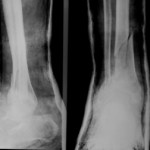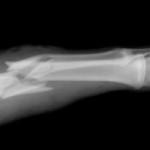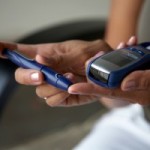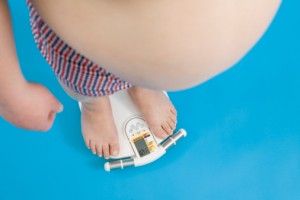Osteoporosis treatment news roundup 2015: Prevention, treatment breakthroughs and outlook for 2016
Osteoporosis is typically seen as a female condition, but men can still develop it. Osteoporosis is a bone disease that increases the risks of fractures, as the bones become weaker and more brittle over time. There are many factors that increase the risk of osteoporosis, including a lack of calcium, age and being female.
In 2015, a lot of news came to light in regards to osteoporosis, including prevention tips and treatment breakthroughs. Please enjoy Bel Marra Health’s 2015 roundup of osteoporosis news articles to not only educate yourself on the disease, but to create a better outcome for future generations in 2016.
Osteoporosis Cause: New genetic cause of osteoporosis found, rare gene identified
A team of researchers found a rare gene linked to osteoporosis.
 A rare gene – the EN1 gene – has been identified as a potential osteoporosis cause by researchers at McGill University. With the use of extensive genetic data from the UK10K project, the research team uncovered that a variant of the EN1 gene has a large effect on bone mineral density (BMD).
A rare gene – the EN1 gene – has been identified as a potential osteoporosis cause by researchers at McGill University. With the use of extensive genetic data from the UK10K project, the research team uncovered that a variant of the EN1 gene has a large effect on bone mineral density (BMD).
Lead research Dr. Brent Richards said, “EN1 has never before been linked to osteoporosis in humans, so this opens up a brand new pathway to pursue in developing drugs to block the disease.” Supplementing author Vince Forgetta added, “The effect of this uncommon genetic variant that we identified in this gene is twice as large as any previously identified genetic variants for BMD and fracture.” Learn More
Exercise and Osteoporosis: Exercise benefits for osteoporosis, reduces bone fracture risk
A new study revealed that exercise can help reduce the risk of bone fractures.
 A recent hip hop study – no not the music, we literally mean hopping – has shed some light on how to reduce fractures risk, specifically fractures from osteoporosis. The study, conducted through a special mapping technique at the University of Cambridge, demonstrated that just two minutes of hopping per day could strengthen hip bones and reduce the risk of fractures after a fall.
A recent hip hop study – no not the music, we literally mean hopping – has shed some light on how to reduce fractures risk, specifically fractures from osteoporosis. The study, conducted through a special mapping technique at the University of Cambridge, demonstrated that just two minutes of hopping per day could strengthen hip bones and reduce the risk of fractures after a fall.
Men over the age of 65 took part in a number of hopping routines that put stress on their hips. Hopping meant researchers could make comparisons between legs. CT scans were taken and analyzed through a bone mapping process that showed clear differences between the legs. After a full year of hopping, bone mass increases were observed. Most startling was that there were improvements in the thinnest areas of the bone. These areas are most at risk of fracture after a fall. Learn More
Women with Osteoporosis: Osteoporosis fracture risks in older women reduce by growth hormone
Researchers found that a growth hormone can reduce fracture risk in older women.
 Estimates reveal one in four women over the age of 65 have osteoporosis of the hip or spine. Hormones are thought to play a large role in the development and onset of osteoporosis. When women go through menopause, production of estrogen is greatly reduced thus weakening bones. Research now suggests that a growth hormone can greatly reduce the risk of fractures due to osteoporosis in older women.
Estimates reveal one in four women over the age of 65 have osteoporosis of the hip or spine. Hormones are thought to play a large role in the development and onset of osteoporosis. When women go through menopause, production of estrogen is greatly reduced thus weakening bones. Research now suggests that a growth hormone can greatly reduce the risk of fractures due to osteoporosis in older women.
Osteoporosis is a chronic condition where bones become weaker over time, resulting in an increase of fractures. Researchers examined the role of a growth hormone for its ability to reduce the risk of fractures. Learn More
Menopause and Osteoporosis: Protection against osteoporosis in menopausal women may be possible with soybean foods
Soy protein and isoflavones can help prevent osteoporosis during menopause.
 Recent research suggests that a diet rich in soy protein and isoflavones can protect menopausal women from developing osteoporosis. The findings were presented at the Society of Endocrinology conference.
Recent research suggests that a diet rich in soy protein and isoflavones can protect menopausal women from developing osteoporosis. The findings were presented at the Society of Endocrinology conference.
Osteoporosis commonly affects aging women and leads to fragile and brittle bones. In the years immediately after menopause women experience the greatest bone loss because they produce less estrogen which helps keeps bones strong.
As they contain certain isoflavones which act like estrogen, soybean foods play a crucial role in helping against bone loss.
Researchers from the University of Hull gave 200 women in early menopause a daily supplement of soy protein with soy isoflavones or just a supplement containing soy protein. The researchers analyzed changes in bone activity from the women’s blood. Learn More
Osteoporosis and Diabetes: Osteoporosis and bone fractures risk, role of type 1 and type 2 diabetes
Several research studies have discovered that type 1 and type 2 diabetes are osteoporosis risk factors.
 The link between type 1 diabetes and osteoporosis was uncovered over a decade ago, but has lately been gaining more attention. Type 1 diabetes is associated with low bone density – a characteristic of osteoporosis as well. A study from Norway uncovered that women with type 1 diabetes had higher cases of hip fractures than nondiabetic females.
The link between type 1 diabetes and osteoporosis was uncovered over a decade ago, but has lately been gaining more attention. Type 1 diabetes is associated with low bone density – a characteristic of osteoporosis as well. A study from Norway uncovered that women with type 1 diabetes had higher cases of hip fractures than nondiabetic females.
An alternative study revealed that the duration of diabetes also plays a role in bone health. They found that even women who had type 1 diabetes for less than five years had a 12.25 increase in bone fractures when compared with non-diabetic women.
Previous research revealed that type 2 diabetes could actually protect the bones as added body weight can make them stronger. But recent findings suggest otherwise. Learn More
-
Tips on How To Flatten Your Stomach
It is a proven fact that there is no sin
-
What is a Fitness Boot Camp and Why Should I join? (Part I)
A燜itness Boot Camp is....... You may o
-
Weight Loss Recipes To Get You Back Into Shape
More and more people are searching for w
-
Is It Water Loss Or Fat Loss
The problem with many weight loss supplement formulas sold today is th
-
Weight Loss Tips: Let Your Goals Shine Brightly!
Anyone who had done weight loss knows that to lose weight you need
-
Tea benefits: weight loss, improved bone health and mood
That moment in the morning when tea drinkers take their first war
- DON'T MISS
- Charita Smith On Her Weight Loss: “Keep Your Promises”
- No Herbal Weight Loss Pill Will Let You Eat What You Want
- Weight Loss Tips And Tricks To Fit Your Busy Life
- Weight-loss Diet plan – Unique varieties of food to burn the fat and shed weight – Health
- Eating Out - Points to Consider for Your Diet Plan
- Why osteoporosis isn’t just for women anymore…
- Tips To Shed Your Excess Pounds And Feel Great
- Going On A Diet? 10 Reasons Why Diets Fail
- Following These Steps Will Certainly Help You Drop Weight
- A Guide to Choose the Best Weight Management Programme




